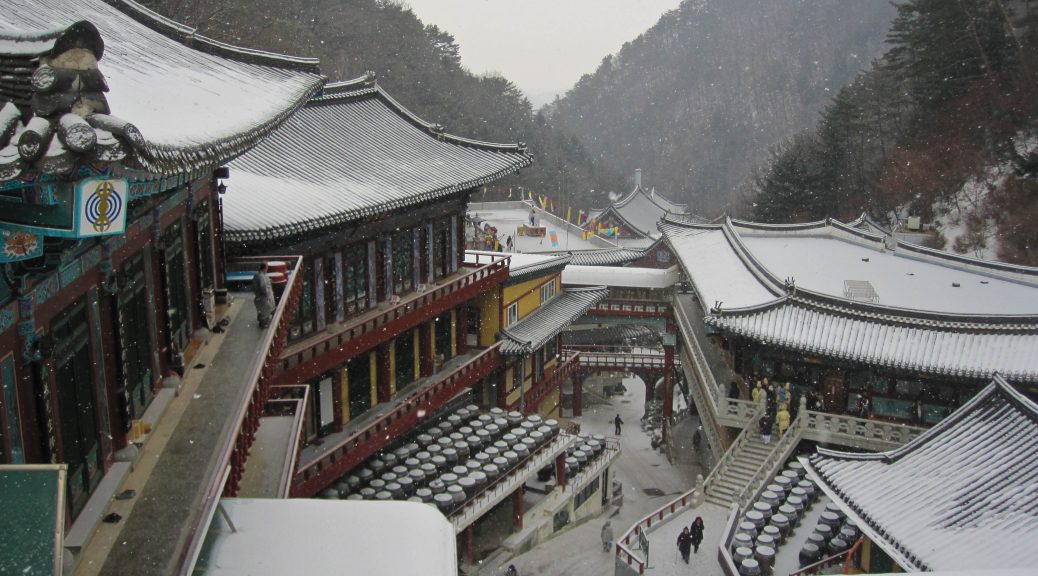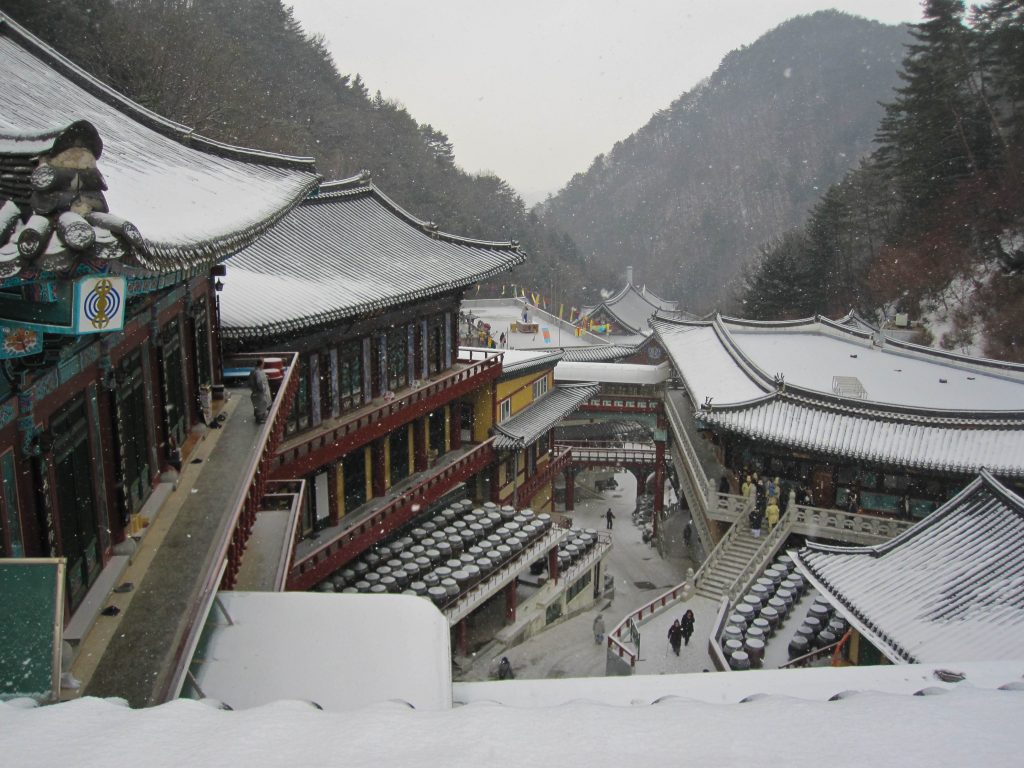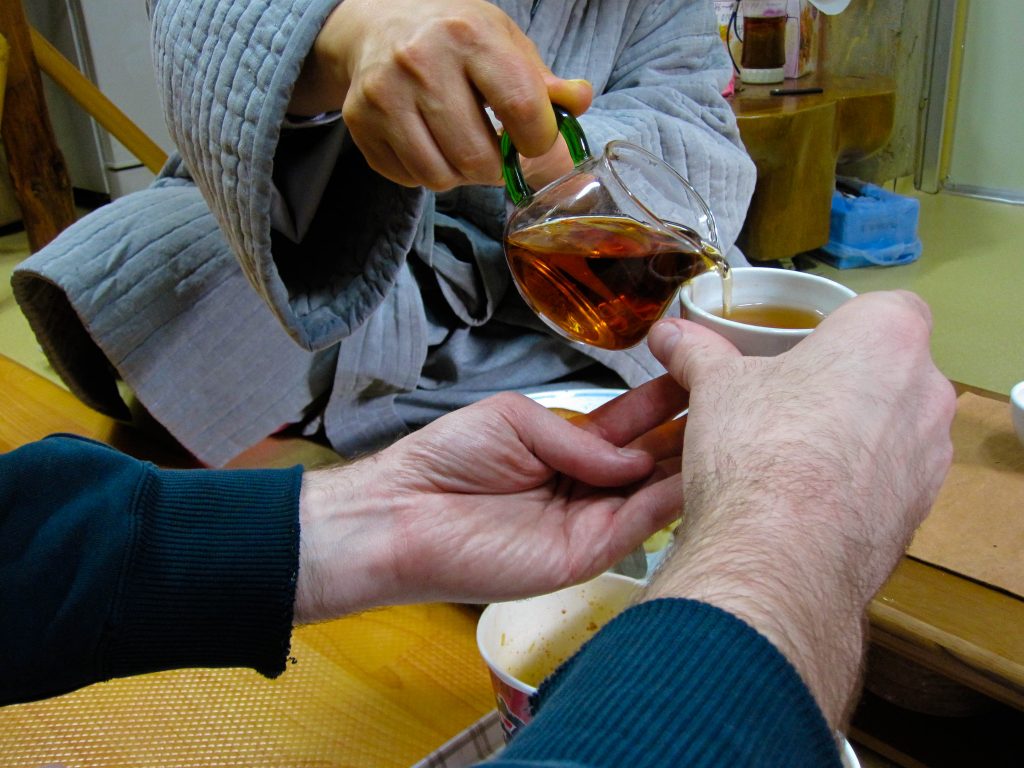
Guinsa

Getting there:
Unless you live in Seoul or Cheongju (both of which offer direct buses), your best bet would be to go to Danyang or Jecheon first, and then take a bus to the temple. Both of these places are on the rail lines so you can book your ticket online at Korail’s English website. Check with the local tourist information (043-1330) for particulars regarding the bus times.
Me, K, and L (K’s cousin) went to Guinsa on Saturday. Getting there was an adventure in itself, as we scoured the neighborhood for a taxi at 5:45. When we got to the station we had to dash full tilt to make our train, we got off at the next city and took a 4 and a half hour bus which brought us to the temple. The entire place was huge! We walked around in the snow taking it all in.
Eventually a curious monk approached us. After polite greetings he told us a little about the temple. The temple is large enough for 30 000 but used by 2 000 daily. He didn’t speak English, but my Korean has come far enough to serve as translator for basic stuff. After we parted ways he gave me his ‘name card’ and he took down my phone number. A note on name cards, they’re used over here to allow Koreans an easy way to determine what level of polite speech to use with new acquaintances.
We came upon one of the main halls and another monk approached us. She spoke pretty good English and offered to show us around. So we went inside the main halls and she explained the significance of the different buildings. She explained the method of and ideas behind Buddhist prayer and demonstrated how to perform the bows involved. K & L aren’t Buddhist and didn’t partake, but that didn’t stop me. As the monk explained to us, the bows are more a greeting than actual prayer in the Christian sense. She took us on a quick hike to the grave site of the monk who founded the temple. A few bows later and we were invited for tea with our guide and one of her senior monks. They were great hosts, in addition to the tea we had cup noodles, sliced apples and temple kimchi which is different from other types. Usually kimchi is made with little brine shrimp which obviously doesn’t fly with buddhists, giving their Kimchi a bit of a sweeter taste than what you normally find outside the temple grounds. They even gave me some for the road. Needless to say I’m the only one in my house who appreciates Korea’s national dish.
